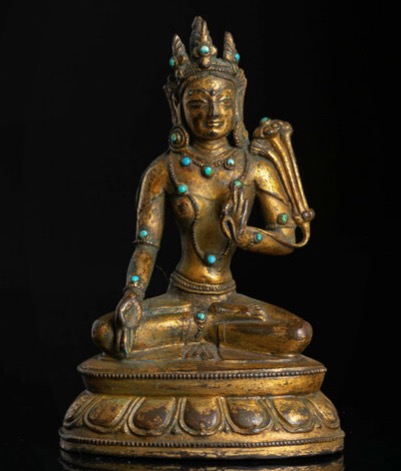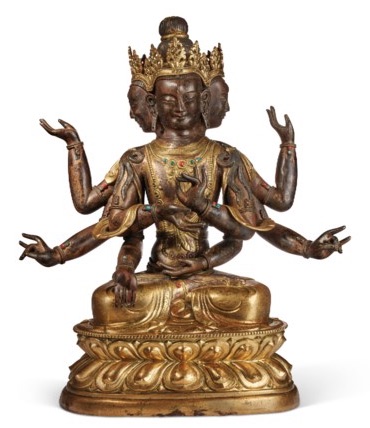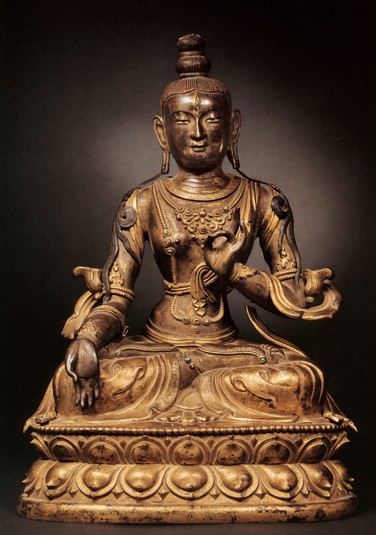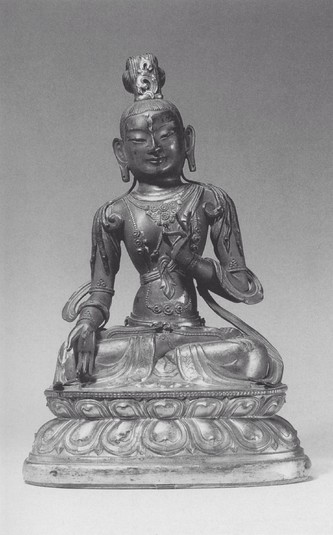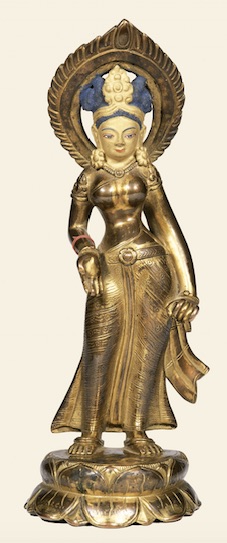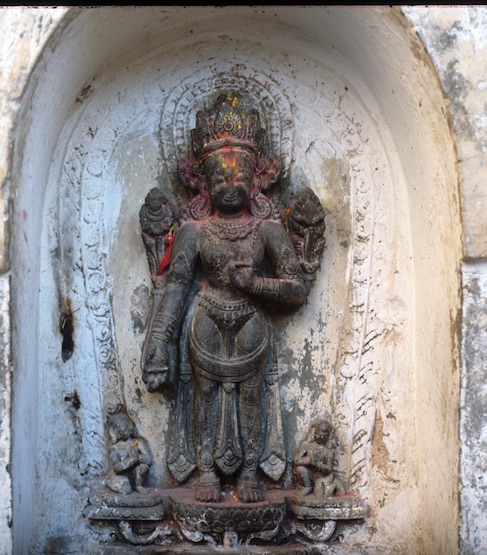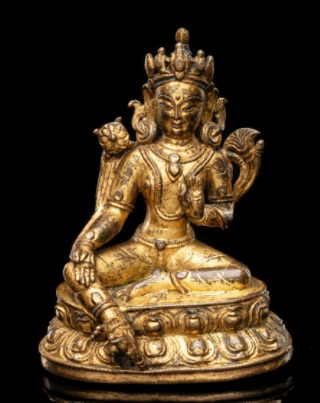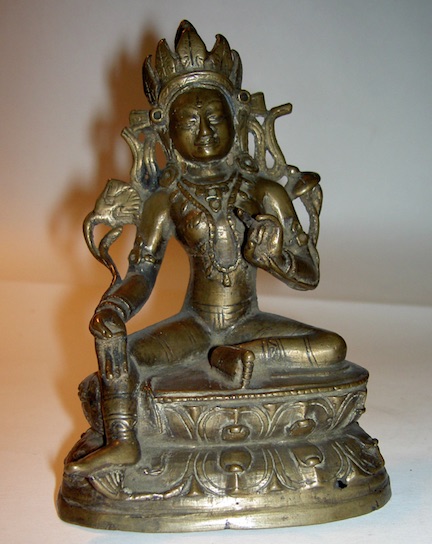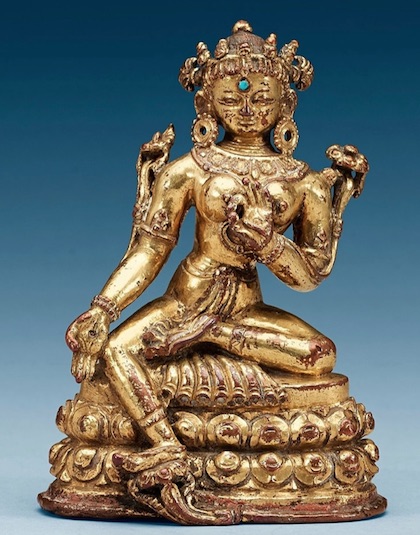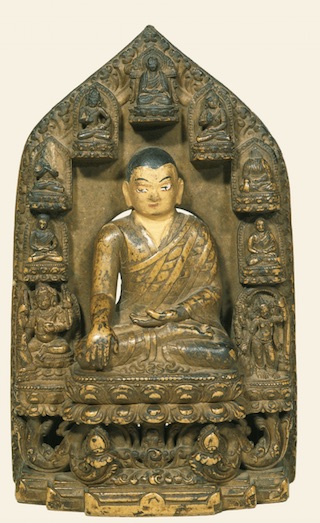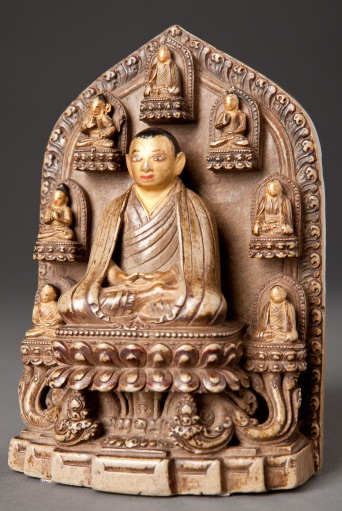
11th century, North(eastern) India, Vajra Tara, metal (brass), private collection, photo on HAR

11th-12th century, Northeastern India, Vajra-Tara, stone, 12,5 cm, photo: courtesy of Ulrich von Schroeder, Buddhist Sculptures in Tibet Volume One, Visual Dharma Publications, Hong Kong, p. 390 pl. 126A Potala Collection, Lima Lhakhang inventory nº 1567, Lhasa (Tibet).
Also known as Vajritara, this form of Tara has one or four heads (each with three eyes) and four or eight arms. She usually holds a conch shell in her lower right hand extended in the gesture of generosity, a noose, an arrow, a vajra sceptre in the remaining ones; her main left hand makes a threatening gesture (tarjani mudra) and may hold a lasso, the others hold a hook (elephant goad), a bow, a lily.

Circa 12th century, Indian work for Tibetans, Ashtamahabhaya Tara, stone, 11,6 cm, photo as before (p. 393 pl. 127C) Potala Collection, Lima Lhakhang inventory nº 1634, Lhasa (Tibet).
As explained by the author, ‘Tara who Saves from the Eight Great Perils’ is surrounded by eight images of herself in the act of saving devotees from the eight great perils: a lion, an elephant, fire, a snake, robbers, prison, water, and a demon. She may be an aspect of White Tara or Green Tara. Her right hand is in the gesture of supreme generosity, the other clutches the stem of a blue lily. The above is seated with a leg pendent, atop a lotus seat supported by two small nagas (depicted with a human body and a naga hood). We can see the five directional buddhas above her head.

Circa 12th century, Indian work for Tibetans, Ashtamahabhaya Tara, stone, 17,5 cm, photo as before (p. 393 pl. 127B), Potala Collection, Lima Lhakhang inventory nº 1668, Lhasa (Tibet).
This one has the five tathagatas plus two monks above her head, and a number of unidentified figures under her seat. Mr von Schroeder tells us that the small female attendant near her left elbow is Ekajata (a dharmapala and the mother of Mahakala and Palden Lhamo).

Circa 12th century, Indian work for Tibetans, Ashtamahabhaya Tara, stone, 14,5 cm, photo as before (p. 392 pl. 127A), Potala Collection, Lima Lhakhang inventory nº 1579, Lhasa (Tibet).
A more complex distribution with more attendants, whom the author identifies as Marichi, Mahamayuri, and Janguli, two forms of Mahakala, and quite a few unidentified figures including various couples.




